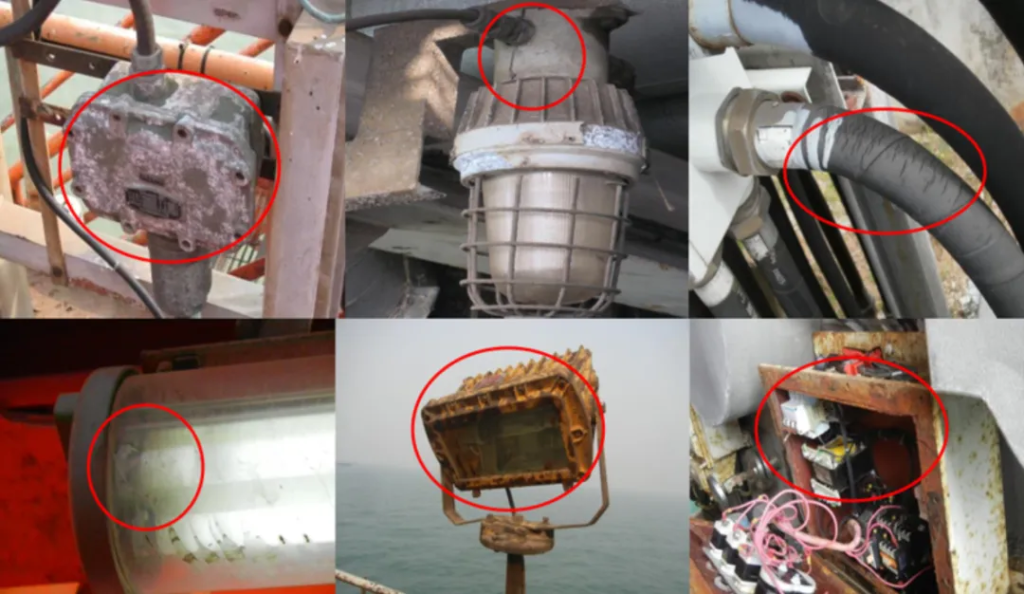Flameproof electrical equipment is extensively utilized in production sites, and the flameproof joint surface is among the factors influencing the flameproof performance. During on-site inspections, the issue of rusting on the flameproof joint surface is relatively common. Hence, it is of utmost significance to carry out effective rust prevention treatment and maintenance of the flameproof joint surface.
I. Requirements for Rust Prevention Treatment of Flameproof Joint Surfaces
The flameproof joint surfaces are not permitted to be painted or plastic-coated. Other coating materials can be employed provided that it has been verified that these coating materials and their application processes do not have adverse effects on the flameproof performance of the joint surfaces.
Anti-rust grease, such as petrolatum or soap-thickened mineral oil, can be applied before assembly onto the joint surfaces. If anti-rust grease is applied, it should not age and harden, contain volatile solvents, and should not cause rust on the joint surfaces. Its suitability should be examined in accordance with the manufacturer’s instructions for the grease. The joint surfaces can be electroplated. In this case, the metal coating should meet the following requirements:
— If the thickness does not exceed 0.008 mm, no additional considerations are necessary.
— If the thickness exceeds 0.008 mm, the maximum clearance without coating should still conform to the applicable requirements for the joint surface, and the explosion transmission test should be conducted based on the clearance size without coating.
II. Requirements for the Maintenance of Flameproof Joint Surfaces
When reassembling the flameproof enclosure, all mating surfaces should be thoroughly cleaned and coated with the specified appropriate grease to prevent corrosion and enhance weather protection. The bolt through holes should not be lubricated with grease. Only non-metallic scrapers and non-corrosive cleaning liquids should be employed to clean the flanges.

